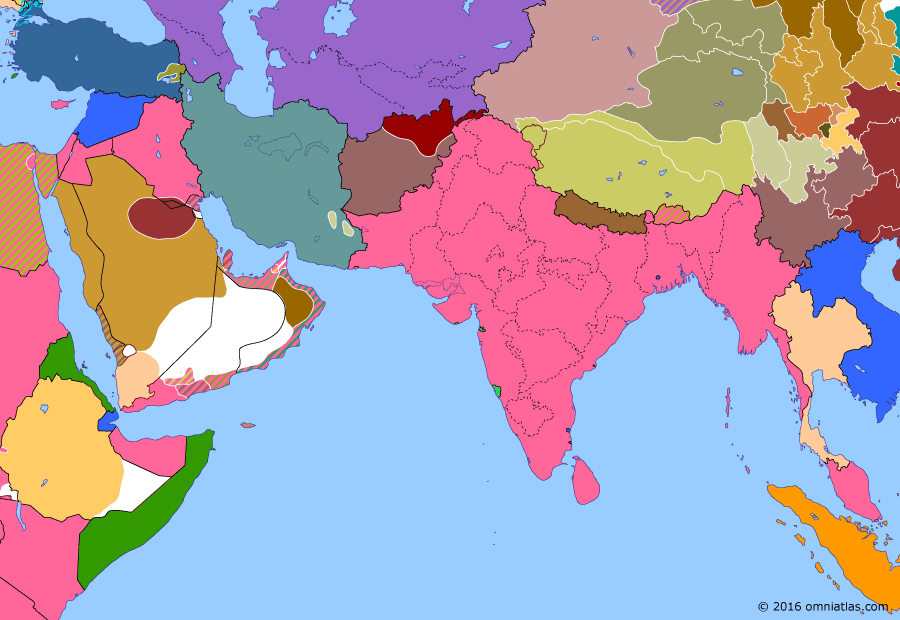Southern Asia 1929: Ikhwan Revolt

29 March 1929
29 Mar 1929
Rising Nationalism
1880–1914 Pax Britannica
1914–1917 Great War in the Middle East
1917–1918 Fall of the Ottoman Empire
1918–1923 Anglo-French Overreach
1923–1934 Rising Nationalism
1934–1940 Arrival of the New Order
1940–1941 World War II: The Middle Eastern Theater
1941–1945 World War II: The South-East Asian Theater
1945–pres Independence
Ikhwan Revolt
24 Jul 1923 Treaty of Lausanne
13 Oct 1924 Saudi Conquest of Hejaz
12 May 1925 Soviet Reorganization of Central Asia
24 Aug 1925 Great Syrian Revolt
20 May 1927 Treaty of Jeddah
29 Mar 1929 Ikhwan Revolt
27 Apr 1930 Salt March
26 Mar 1931 Sino-Tibetan War
22 Sep 1932 Formation of Saudi Arabia
12 Dec 1933 First East Turkestan Republic
The Saudi conquests in Arabia had been achieved with the support of the Ikhwan tribal armies, who wanted to go on to attack the British protectorates of Iraq, Kuwait, and Transjordan. Not wishing to antagonize the British, Ibn Saud attempted to reign in the Ikhwan but soon faced open revolt. Eventually the Ikhwan were defeated by Saud's more modern army, helping to bring about a centralized Saudi state.